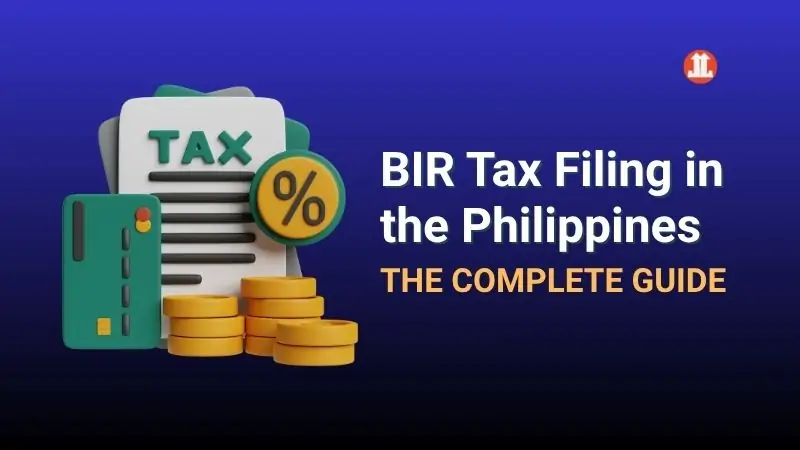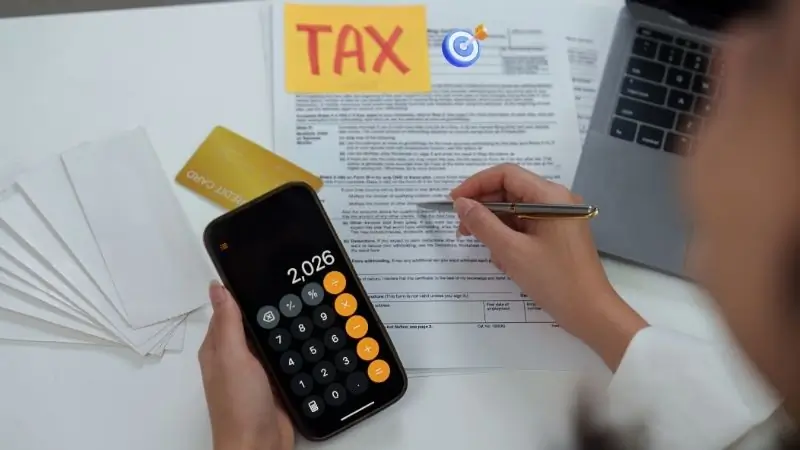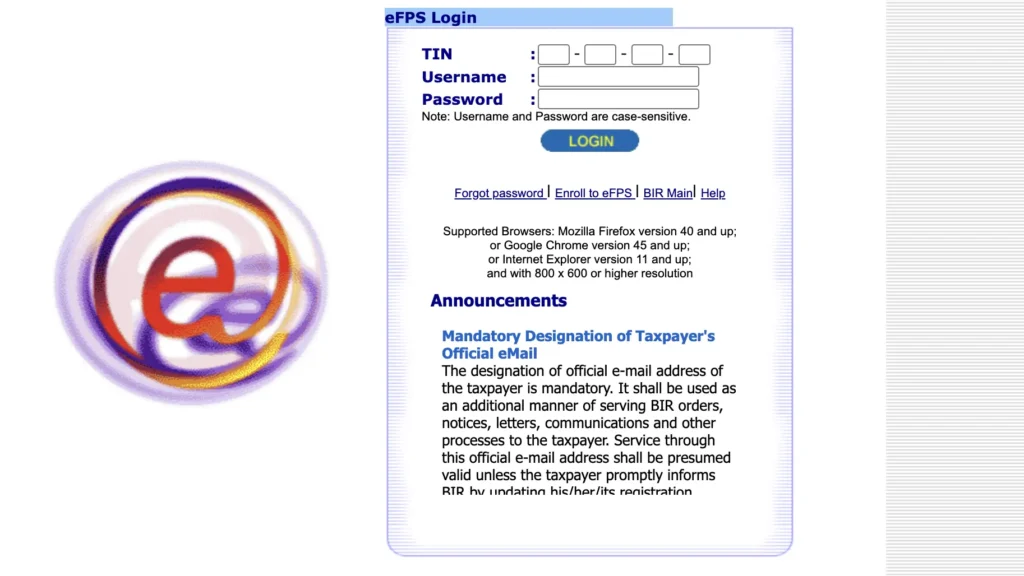BIR Tax Filing 2025: Complete Step-by-Step Guide for Business Owners & Freelancers
Complete BIR tax filing guide 2025 for business owners and freelancers in the Philippines. Step-by-step instructions, deadlines, forms, and requirements.

Let’s be honest – tax filing in the Philippines feels like trying to solve a Rubik’s cube blindfolded. The Bureau of Internal Revenue (BIR) forms, deadlines, penalties… it’s enough to make anyone want to hide under their desk until May.
But here’s the thing: it doesn’t have to be that complicated.
This guide breaks down everything you need to know about BIR tax filing in 2025. No confusing jargon. No assumptions that you have an accounting degree. Just straightforward, practical steps that’ll help you file your taxes correctly and on time.
Ready? Let’s dive in.
Why filing your taxes on time actually matters
Before we dive into the how-to, let’s talk about the why. Because understanding the stakes makes the process feel less arbitrary.
- The penalties are no joke. Miss your deadline, and the BIR slaps you with a 25% surcharge on top of your tax due, plus 12% interest per year. File incorrectly? That’s another potential penalty. These aren’t small amounts. They add up fast and can seriously hurt your business cash flow.
- But it’s not just about avoiding punishment. Having clean tax records opens doors. Need a bank loan? They’ll ask for your ITR. Applying for a visa? Many embassies want to see proof you’re paying taxes. Bidding on a government contract? Your BIR clearance better be spotless.
Plus, and this might sound weird, there’s genuine peace of mind in knowing your tax obligations are handled. No more jumping every time you see a BIR email. No more stress about potential audits. Just clean books and a clear conscience.
Understanding your taxpayer type
This determines everything. The BIR doesn’t treat all business owners and freelancers the same way. Your filing requirements depend entirely on which category you fall into. Get this part right, and everything else follows logically.

Self-employed individuals and professionals
This is you if you’re a freelancer, virtual assistant, consultant, doctor, lawyer, accountant, or anyone offering professional services. You’re essentially a one-person business operation.
What you’ll file:
- Quarterly Income Tax Returns (Form 1701Q)
- Annual Income Tax Return (Form 1701)
- Percentage Tax or VAT returns (depending on your income)
Mixed income earners
Got a day job but also doing freelance work on the side? You’re a mixed income earner. This applies to employees who have real estate income, professional income, or other sources beyond their salary.
What you’ll file:
- Annual Income Tax Return (Form 1701)
- Possibly quarterly returns if your business income is substantial
Small business owners
Running a sari-sari store, online shop, restaurant, or any business selling goods? You’re in this category.
What you’ll file:
- Monthly Percentage Tax or VAT returns
- Quarterly Income Tax Returns (Form 1701Q)
- Annual Income Tax Return (Form 1701)
The 8% flat rate option
Here’s something many freelancers and small business owners don’t know about: if your annual gross sales or receipts don’t exceed ₱3 million, you can opt for the 8% income tax rate on gross sales/receipts instead of the graduated rates.
This simplifies your life tremendously because you don’t need to track every single expense for deductions. Just calculate 8% of what you earned, and that’s your tax. Done.
The catch? You can’t claim itemized deductions. But for many small operations, the simplicity is worth it.
Key deadlines you cannot miss in 2025
Mark these dates in your calendar right now. Set phone reminders. Tattoo them on your arm if you have to.
Quarterly Income Tax Returns (Form 1701Q)
- Q1 2025: May 15, 2025 (covering January to March)
- Q2 2025: August 15, 2025 (covering April to June)
- Q3 2025: November 15, 2025 (covering July to September)
Annual Income Tax Return (Form 1701)
- April 15, 2025 (covering the entire 2024 tax year)
Monthly Percentage Tax or VAT returns
- 20th day of the following month (e.g., January sales are due February 20)
Monthly Withholding Tax Returns
- 10th day of the following month if you have employees
Pro tip: The BIR doesn’t care that the deadline falls on a weekend or holiday. If it does, the deadline moves to the next working day, but don’t count on this. File early and avoid the rush.
What documents you need to gather right now
Tax filing is 80% preparation, 20% actual form-filling. Get your documents organized, and the rest becomes surprisingly manageable.
Income records
- Official receipts or invoices you issued to clients
- Sales records if you’re selling products
- Bank statements showing deposits
- Payment confirmations (PayPal, bank transfers, checks)
- Certificate of Income Tax Withheld (BIR Form 2307) if clients withheld taxes
The reality check: If you’re a freelancer who hasn’t been tracking income throughout the year, go through your bank statements month by month. Yes, it’s tedious. Yes, you should’ve done it earlier. But it’s doable, and you need those numbers.
Expense records
- Receipts for business expenses (supplies, equipment, software subscriptions)
- Rent payments for office space
- Utility bills (electricity, internet)
- Professional fees paid to others
- Transportation and travel expenses
- Marketing and advertising costs
Important: The BIR only accepts receipts with your business name on them. Personal receipts don’t count as business expenses, even if you used the items for work.
Registration documents
- BIR Certificate of Registration (Form 2303)
- Mayor’s Permit / Business Permit
- Books of Accounts (if required for your registration type)
- Previous tax returns (helpful for reference)
How to file your Quarterly Income Tax Return
Let’s walk through the actual process. I’ll use Form 1701Q as the example since most self-employed individuals and business owners file this quarterly.
Step 1: Calculate your gross income
Add up all the money you earned during the quarter. This includes:
- Professional fees
- Sales revenue
- Service income
- Any other business-related income
Example: Let’s say you’re a freelance graphic designer. In Q1 2025, you earned ₱150,000 from various clients.
Step 2: Determine your tax rate
If you’re using the graduated tax rates, here’s the 2025 structure:
Income Range | Tax Rate |
|---|---|
Up to ₱250,000 annually | 0% |
₱250,000 – ₱400,000 | 15% of excess over ₱250,000 |
₱400,000 – ₱800,000 | ₱22,500 + 20% of excess over ₱400,000 |
₱800,000 – ₱2,000,000 | ₱102,500 + 25% of excess over ₱800,000 |
₱2,000,000 – ₱8,000,000 | ₱402,500 + 30% of excess over ₱2,000,000 |
Above ₱8,000,000 | ₱2,202,500 + 35% of excess over ₱8,000,000 |
Or if you opted for the 8% rate: Just multiply your gross receipts by 8%.
Step 3: Subtract allowable deductions (if using graduated rates)
Common deductions include:
- Cost of goods sold (for businesses selling products)
- Salaries and wages
- Rent
- Utilities
- Depreciation on equipment
- Professional fees
- Office supplies
The 40% optional standard deduction: Instead of itemizing every expense, you can automatically deduct 40% of your gross income. This is often simpler for freelancers.
Using our example: ₱150,000 gross income × 40% = ₱60,000 deduction. Your taxable income becomes ₱90,000.

Step 4: Calculate your tax due
For ₱90,000 quarterly income (₱360,000 annually), you’d fall in the 15% bracket.
- Since ₱360,000 exceeds ₱250,000 by ₱110,000,
- ₱110,000 × 15% = ₱16,500 annual tax
- ₱16,500 ÷ 4 quarters = ₱4,125 per quarter
Step 5: Fill out Form 1701Q
Now for the actual form. You can download it from the BIR website or get a copy from your RDO (Revenue District Office).
Key sections to complete:
- Part I: Your basic information (TIN, name, address, RDO code)
- Part II: Your income details
- Part III: Deductions (if applicable)
- Part IV: Tax computation
- Part V: Your signature and date
Common mistakes to avoid:
- Wrong RDO code (use the one where you’re registered, not where you live)
- Forgetting to check the correct boxes for your taxpayer type
- Math errors (double-check your calculations)
- Missing signature (yes, people forget this)
Step 6: Pay your taxes
You have several payment options:
- Over-the-Counter Payment:
Visit any authorized agent bank (BDO, BPI, Land Bank, etc.) with your accomplished form. They’ll stamp it and give you a copy as proof of payment.

- Online Payment:
Use the BIR’s Electronic Filing and Payment System (eFPS) if you’re enrolled. This is honestly the easiest method once you’re set up.
- GCash or PayMaya:
Some RDOs now accept digital wallet payments. Check with yours.
Step 7: File your return
Submit your stamped tax return (with payment proof) to your RDO within the deadline. You can file in person or, if enrolled in eFPS, submit electronically.
Keep copies of everything. Seriously. The BIR might ask for proof years later, and “I filed it, I swear” doesn’t count as documentation.
How to file your Annual Income Tax Return
The annual return (Form 1701) is more comprehensive but follows similar logic.
The big difference
Your annual return covers the entire tax year and requires reconciliation. You’ll need to:
- Add up all four quarters of income
- Calculate your total annual tax due
- Subtract what you already paid in quarterly returns
- Pay the difference (or claim a refund if you overpaid)
Additional requirements for Annual Returns
Audited Financial Statements: If your gross annual sales/receipts exceed ₱3 million, you need to attach audited financial statements prepared by a CPA.
Attachments Checklist:
- Proof of quarterly tax payments
- Alphalist of Payees (if you paid others and withheld taxes)
- Financial statements
- Summary of sales and purchases
The refund situation
Overpaid your taxes throughout the year? You have two options:
- Option 1: Request a tax refund (prepare for a lengthy process)
- Option 2: Carry over the excess as a credit for next year’s taxes (much simpler)
Most small business owners and freelancers choose Option 2 because BIR refunds can take months or even years to process.
Percentage Tax vs. VAT: which one applies to you?
This confuses a lot of people, so let’s clear it up.
Percentage Tax or Non-VAT (3%)
You pay percentage tax if:
- Your annual gross sales/receipts don’t exceed ₱3 million
- You’re NOT VAT-registered
You file Form 2551Q quarterly (due dates: April 25, July 25, October 25, January 25).
The calculation is simple: Gross sales × 3% = Percentage tax due.
Value-Added Tax (12%)
You must register for VAT if:
- Your annual gross sales/receipts exceed ₱3 million
- You voluntarily register for VAT (some do this to appear more established)
You file Form 2550M monthly (due on the 20th of the following month).
VAT is trickier because you collect 12% from customers, then remit it to the BIR minus the VAT you paid on business purchases (input VAT).
Example: You billed a client ₱112,000 (₱100,000 + ₱12,000 VAT). You bought supplies for ₱11,200 (₱10,000 + ₱1,200 VAT). You remit ₱12,000 – ₱1,200 = ₱10,800 to the BIR.
Common mistakes that trigger BIR audits
Let’s talk about red flags that might get you unwanted attention from the BIR.
Underreporting income
The BIR has access to your bank records. If you’re reporting ₱300,000 in annual income but depositing ₱1 million into your account, expect questions.
The fix: Report all income, even cash payments. Yes, all of it.
Claiming excessive deductions
If your expenses consistently equal 95% of your income, the BIR will wonder how you’re surviving. Deductions should be reasonable and legitimate.
Not issuing receipts
Required to issue official receipts but not doing it? That’s a violation. The BIR conducts random checks, and the penalties are steep.
Filing late consistently
One late filing might be forgiven. Chronic late filing patterns suggest you’re not taking your obligations seriously.
Mismatched information
Your income tax return should match your percentage tax or VAT returns. Inconsistencies raise immediate red flags.
What to do if you’ve missed previous deadlines
Okay, real talk: Maybe you’re reading this and thinking, “This is great, but I haven’t filed taxes in two years.”
First, breathe. You’re not the first person in this situation, and the BIR has seen worse.
Step 1: File Immediately
Don’t wait any longer. File all your back returns as soon as possible. Late filing is bad, but not filing at all is worse.
Step 2: Pay What You Owe (Plus Penalties)
Calculate your tax due for each missed period, add the 25% surcharge and 12% annual interest, and pay it. Yes, it’ll hurt. But it stops the interest from compounding further.
Step 3: Consider the Voluntary Assessment Program
The BIR occasionally offers tax amnesty programs with reduced penalties. Check if any are currently available.
Step 4: Get Professional Help
If you owe significant back taxes, consult a tax professional. They can help negotiate payment plans or find legitimate ways to reduce your liability.
The reality: The BIR is more interested in getting you compliant than destroying your business. If you approach them proactively with a plan to fix things, they’re often willing to work with you.
Tools and resources to make tax filing easier
You don’t have to do this completely alone. Here are resources that’ll make your life easier:
BIR eFPS (Electronic Filing and Payment System)
Once you’re enrolled, you can file and pay taxes online. The initial enrollment is a hassle (you need to visit your RDO), but it’s worth it for the convenience.
Website: https://efps.bir.gov.ph
Accounting Software
QuickBooks, Xero, or Wave: These track income and expenses automatically, generate reports, and make tax time infinitely less painful.
Local options: Some Philippine-based accounting software caters specifically to BIR requirements.
BIR Mobile TIN verifier app
Verify TINs of clients and suppliers to ensure you’re dealing with legitimate, registered entities.
Excel templates
If software feels like overkill, a simple Excel spreadsheet tracking monthly income and expenses works fine. The key is consistency.
Tax calculators
Several websites offer free BIR tax calculators where you input your income and it computes your tax due. Use these to double-check your math.
Building a system so next year is easier
Here’s the secret successful business owners know: Tax filing is easy when you prepare all year, not just in April.
Monthly habits to develop
First week of each month:
- Organize last month’s receipts
- Record all income and expenses in your tracking system
- Reconcile your bank statements
- Set aside money for taxes (aim for 20-30% of income)
This takes maybe 2 hours per month. Compare that to the 20+ hours of panic-driven scrambling most people do right before the deadline.
Quarterly reviews
Every quarter, review your numbers:
- Are you on track with your income goals?
- Are your expenses reasonable?
- Do you need to adjust your tax savings?
- Is there anything unusual that might need explanation?
The Tax Savings account
Open a separate bank account just for taxes. Every time you receive payment, immediately transfer 25-30% to this account. When tax time comes, the money’s already there. No scrambling, no stress.
When to hire a tax professional
DIY tax filing works great for straightforward situations, but sometimes you need expert help.
Consider hiring a tax professional if:
- Your annual income exceeds ₱1 million
- You have multiple income sources
- You’re VAT-registered
- You have employees
- You’re facing an audit
- You’ve made mistakes in previous filings
- Your business structure is complex
What it costs: Expect to pay ₱3,000-₱10,000 for basic tax preparation, more for complex situations. Yes, it’s an expense, but it’s often cheaper than the penalties for getting it wrong.
What to look for: Find a CPA or tax professional who specializes in small businesses and freelancers. Ask for referrals from other business owners in your network.
Your Tax Filing checklist
Let’s bring this all together with a practical checklist you can actually use.
Before filing (do this throughout the year)
- ☐ Track all income as it comes in
- ☐ Keep all receipts organized by month
- ☐ Set aside money for taxes regularly
- ☐ Issue official receipts to all clients
- ☐ Maintain basic books of accounts
One month before deadline
- ☐ Gather all income records
- ☐ Organize all expense receipts
- ☐ Calculate total income and expenses
- ☐ Determine which forms you need to file
- ☐ Download or obtain necessary forms
Two weeks before deadline
- ☐ Complete all required forms
- ☐ Double-check all calculations
- ☐ Prepare payment (ensure sufficient funds)
- ☐ Make copies of everything
One week before deadline
- ☐ Pay your taxes
- ☐ Get payment confirmation
- ☐ Submit your return to the RDO
- ☐ Keep copies of filed returns and payment proof
After filing
- ☐ File copies in a safe place
- ☐ Update your tax calendar for next quarter
- ☐ Review what went well and what to improve
- ☐ Set reminders for next deadline
Final Thoughts
Look, I’m not going to lie and say tax filing is fun. It’s not. It’s paperwork and numbers and deadlines and rules that sometimes seem designed to confuse you.
But it’s also completely doable.
Thousands of freelancers and small business owners across the Philippines file their taxes correctly every year without accounting degrees or expensive consultants. They just take it step by step, stay organized, and don’t let the process intimidate them.
That can be you.
Start with this guide. Follow the steps. Mark your calendar. Set up your systems. And when April 15 rolls around, you’ll file your taxes with confidence instead of panic.
The BIR isn’t the enemy. It’s just a system you need to understand and work within. And now you understand it.
So take a deep breath, grab your receipts, and get started. Your future self (the one not paying penalties and interest) will thank you.
You’ve got this. Now go file those taxes.
Have questions about your specific tax situation? While this guide covers the basics, consider consulting with a CPA or tax professional for personalized advice. The BIR also offers free consultations at your local RDO – yes, really. They’d rather help you file correctly than audit you later.





